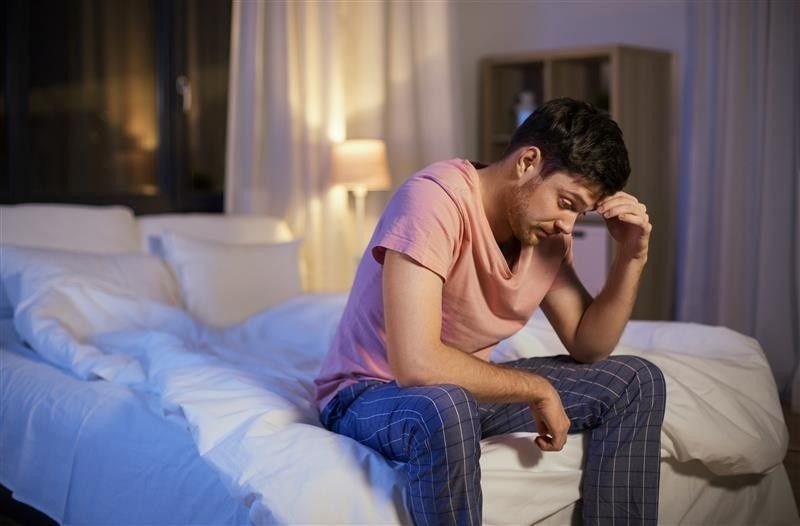The Hidden Cause of Testicular Pain: How Men’s Pelvic Floor Therapy in Texas Can Help
A Silent Struggle Many Men Don’t Talk About
If you’ve been dealing with nagging testicular, groin, penile, or rectal pain and you’ve seen doctors, done the tests, and taken the antibiotics, and still don’t have improvement or have a clear answer, you’re not alone. Many men go through months or even years of discomfort without real relief. It’s frustrating. It’s exhausting and depressing; it can feel like no one is listening or hearing.
At my clinic in Spring Branch, I work with men every week who’ve had similar experiences. What most of them have in common is this: the discomfort is most often generated from dysfunction of the muscles and nerves of the pelvic floor. That’s why I offer a focused approach to testicular and penis pain treatment in Spring Branch Area through men’s pelvic floor physical therapy.
What Is Testicular Pain — and Why Is It So Often Misunderstood?
Testicular pain, or orchialgia, is defined as discomfort that lasts longer than three months. It can come and go, stay in one spot, or move around. Some men feel it directly in the testicle, while others feel it in the groin, lower abdomen, or inner thigh. It might feel sharp, aching, or like a pulling sensation.
The challenge? Most standard medical tests — like ultrasounds or bloodwork — don’t show a clear problem. That’s because chronic testicular pain often isn’t caused by the testicle itself. It’s caused by muscle tension, nerve irritation, or perhaps scar tissue, especially in the pelvic region.
This is where Men’s Pelvic Floor PT specialists in Houston, Texas, like me, come in. Pelvic floor dysfunction is still underdiagnosed in men, but it’s one of the most common contributors to this kind of pain.
What Really Causes Testicular Pain?
Testicular pain can be driven by a number of underlying issues, many of which are treatable with the right approach:
- Pelvic floor muscle tension – The muscles in your pelvic region can become overly tight, leading to nerve compression or restricted blood flow.
- Nerve entrapment – Nerves like the ilioinguinal, genitofemoral, and pudendal travel near or through the pelvic floor and can become irritated or compressed.
- Referred pain – Issues in the lower back, hip, or abdomen often send pain signals to the testicle, even when there’s nothing wrong with the testicle itself.
- Post-surgical scarring – Hernia and hemorrhoid repairs, vasectomies, or abdominal surgeries can leave behind scar tissue that tugs on nearby fascia and nerves.
- Prolonged sitting or straining – Long hours at a desk, chronic constipation, or overtraining the core can all overload the pelvic area.
These are the kinds of patterns I look for during a men's pelvic floor physical therapy evaluation in Texas.
What Men’s Pelvic Floor Therapy Looks Like
When you come to see me, we start with a detailed conversation about your symptoms, lifestyle, surgeries, and history. I examine how your spine, hips, pelvis, and core move. With your consent, this includes a gentle internal pelvic floor assessment.
Here’s what treatment may involve:
- Manual therapy – To release tension in the pelvic floor, abdominal wall, hips, and groin
- Myofascial and nerve release – Techniques to mobilize restricted fascia and reduce nerve sensitivity
- Nerve gliding exercises – To help irritated nerves move more freely and reduce symptoms
- Scar tissue work – Especially important if you’ve had a hernia or pelvic surgery
- Breath training – Diaphragmatic breathing can reduce pelvic floor tension and calm the nervous system
- Movement and posture coaching – So your body supports healing rather than re-aggravating sensitive areas.
Sessions are private, quiet, and always tailored to you. No busy clinics. No rushed appointments. Just one-on-one care at my Houston-based pelvic floor clinic.
What You Might Be Feeling — and What That Tells Me
Some men describe a low, constant ache. Others feel sharp twinges during or after sitting, intimacy, or working out. Many tell me their pain moves — one day it’s near the testicle, the next it’s in the groin or lower abdomen. Some feel pressure or tightness, or a strange “pulling” they can’t explain. Sometimes a sense of sitting on a golf ball.
These patterns matter. They tell me how your nerves and muscles may be contributing to your symptoms. Most of the time, they align with known pelvic floor dysfunction — the kind I treat every day through men’s pelvic floor physical therapy in Texas.
By listening closely to your experience and doing a hands-on assessment, I can help identify what’s driving your pain and start to treat it at the source.
Why My Approach Is Different
My practice isn’t a general PT clinic or a busy medical office. I’ve spent over 15 years focused on pelvic health and have seen firsthand that hundreds of men are overlooked or misdiagnosed. At Beckham Physical Therapy and Wellness, you’ll get care that is respectful, thorough, and grounded in evidence.
Whether you’re navigating life after a hernia repair, living with unexplained groin pain, or trying to get back to normal after months of discomfort, I’m here to help.
This isn’t just about managing symptoms — it’s about getting to the root cause, correcting the issue, and restoring normal function of the pelvic floor, returning you to comfort and quality of life through expert-guided men’s pelvic floor physical therapy in Texas, Houston.
Ready to Talk About What’s Really Going On?
If you’ve been told “everything looks fine” but you still feel pain, it’s time to look deeper. Pelvic floor physical therapy may be the missing piece.
I offer testicular pain treatment in the Spring Branch Area for men who are ready to understand what’s happening in their bodies and start working toward real relief. If you’re unsure whether this type of therapy is right for you, I’m happy to answer your questions.
You don’t have to live with discomfort. Contact me today.











